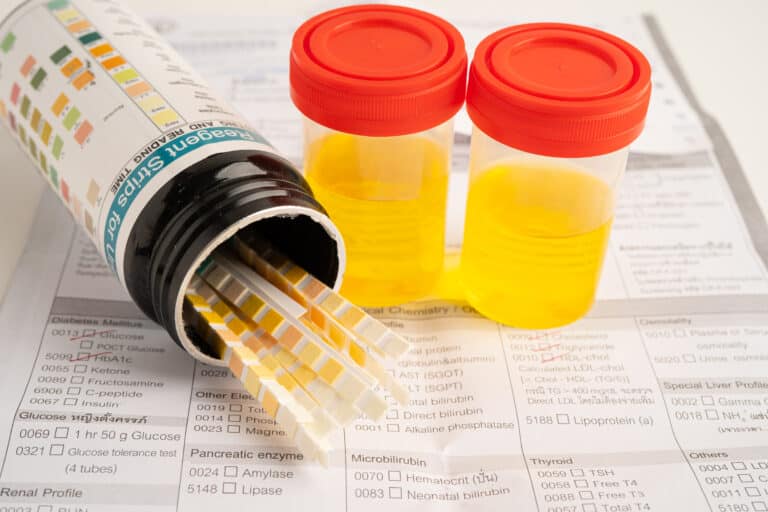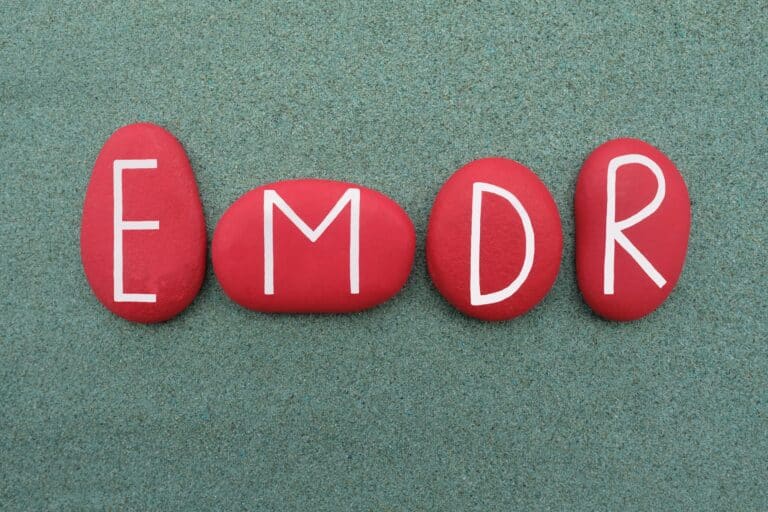Post-traumatic stress disorder is probably something you’re familiar with. Also known as PTSD, this condition is characterized by a set of symptoms that a person exhibits at least a month after experiencing a traumatic event.
While some people experience symptoms right after experiencing the traumatic event, for some people, these issues take longer to manifest. As a result of the delayed response, it is diagnosed as delayed-onset PTSD.
What Is Delayed Onset PTSD?
Delayed-onset PTSD is a subset of post-traumatic disorder where the affected individual does not pass a PTSD diagnosis until six-plus months after the traumatic experience.1 In other words, the individual has PTSD symptoms, but the symptoms are not severe enough to pass for a diagnosis.
Delayed-onset PTSD is prevalent in nearly a quarter of diagnosed PTSD cases.2
It’s mostly common among the elderly, whose cases may stem from a traumatic experience in their youthful years.3 But people in recovery can also be at risk.
Signs and Symptoms of Delayed Onset PTSD
Affected individuals may show one or more of the following signs:
- Intrusive memories of the traumatic event
- Repetitive nightmares related to the event
- Avoiding places, situations, or people that trigger memories related to the event
- Emotional numbness or detachment
- Social withdrawal
- Easily startled or frightened
- Negative thoughts and hopelessness
- Anger outbursts, violence, and aggressive behavior
- Anxiety, irritability, and depression
- Dizziness, panic attacks, and chest pain
Secondary symptoms may include substance ab(use) as a person to self-medicate or make the symptoms less noticeable.
Causes of Delayed Onset PTSD
It’s not entirely clear why this condition occurs, but recent research sheds some light.
It appears that at-risk persons are those experiencing some PTSD symptoms; but not severe enough to meet the disorder’s diagnostic criteria right after a traumatic event.
The occurrence of delayed-onset PTSD without pre-existing PTSD symptoms is rare. Most cases skew towards worsening or re-occurring symptoms.
In a study involving World War II veterans5: Researchers observed that veterans with mild PTSD symptoms in their younger years developed delayed onset post-traumatic disorder later in life: after life-altering events, such as losing a loved one.
That means: Any occurrence of additional high-stress events (in the aftermath of the trauma) can worsen the existing symptoms enough to transform into full-on, diagnosable delayed PTSD.
Such triggers include:
Additional life stressors
Research4 indicates that life struggles (such as unemployment, losing a loved one, or ailments) can increase one’s vulnerability to PTSD symptoms. More precisely, the affected individuals may be more prone to nightmares, anxiety, flashbacks, and rumination.
Additional traumatic events
Additional traumatic events can impair one’s ability to cope with past trauma. For example, if a person lost a friend to a tragic house fire, experiencing or learning about another tragic fire incident can create a traumatic response—leading to a delayed onset diagnosis.
Worsened existing symptoms
Since the existing PTSD symptoms don’t meet the PTSD diagnostic criteria immediately after the traumatic event, it’s unlikely for the affected individual to receive adequate support or seek prompt treatment. That can then cause the symptoms to worsen, pushing them over the line into a full-on, diagnosable disorder.
Complications and Problems Associated with Delayed Onset PTSD
When the affected person fails to exhibit severe symptoms following the traumatic experience, their loved one may assume they have recovered. That may translate to less support and low chances of seeking prompt treatment after exposure to high-stress events.
Since PTSD is a somewhat progressive disorder: The untreated symptoms may worsen over time until they are diagnosable. Or triggered and transformed by additional trauma into severe, diagnosable PTSD symptoms.
In the meantime, the affected person could be experiencing:
- Anger management issues result in spouse abuse, child abuse, or public violence.
- Substance abuse7 to numb the pain and calm anxiety: leading to addiction.
- Severe depression or even suicidal actions amid PTSD episodes
- Loneliness as loved ones increasingly finds the affected individual hard to be around.
Even when the symptoms are mild enough not to meet the PTSD diagnostic criteria: They can still affect one’s life and heighten the risk of delayed onset of the disorder. As such, sufferers need to seek help managing and treating the traumatic responses.
Delayed Onset PTSD Treatment
To address delayed onset post-traumatic disorder, it is essential to treat all responses immediately following the traumatic event. That’s regardless of how mild or minor they seem. (Anxiety, for instance, may not significantly affect one’s daily life, but it can worsen over time.)
So if the uncontrollable thoughts, recurring nightmares, and flashbacks fail to dissipate; and continue for prolonged durations (months or years), professional intervention may be warranted.
Generally, disorder management requires a personalized treatment program to cater to an individual’s specific circumstances, triggers, experiences, and ramifications.
At Southern California Sunrise Recovery Center Mental Health, there are multiple treatment options to help relieve the disorder.
Psychological therapy
Psychological therapies like cognitive behavioral therapy (CBT) are effective treatment options. They incorporate numerous techniques developed to help sufferers deal with delayed-onset PTSD.
They center around the affected person reflecting on the traumatic event. And while that may arouse different emotions, it also helps them develop coping strategies.
Psychological therapies can be on a group or one-to-one basis. Group therapy encourages affected individuals to share their experiences with others. And listen to how different people manage the disorder. In contrast, one-to-one arrangements see individuals confront their traumatic responses with the help of a therapist (psychiatrist).
Well-Being therapy
Well-being therapy, such as outdoor activities, can be incorporated into the treatment to relieve stress or allow the affected person to reflect on the undergoing treatment.
Medication
While people can manage the disorder via psychological and well-being therapies: Affected persons may require medication to overcome any ramifications on their mental well-being.
Dual Diagnosis Treatment
Sadly, more and more people are turning to alcohol and drug substances to relieve PTSD symptoms. Latest estimates show that approximately 27% of women and 35% of men suffering from the disorder simultaneously suffer addiction.7
So at Southern California Sunrise Recovery Center Mental Health, we perform an admission screening to gauge whether an individual will require dual diagnosis treatment. And if so, we evaluate their options together.
The Takeaway
In conclusion: Even when an individual fails to meet the PTSD diagnostic criteria, PTSD-focused therapy can help resolve symptoms, provide additional support, and provide better-coping strategies in cases of future life stressors. 8
At Southern California Sunrise Recovery Center Mental Health, we provide a compassionate environment where persons can recover, grow, and advance at their pace. We strive to cultivate an individual’s confidence and independence: While helping them understand their needs in ways that enhance their recovery.
If a loved one’s PTSD symptoms (and any associated addiction) have worsened over the past six months, we can help. Contact us for a personalized treatment plan.
Sources
- https://doi.org/10.1192/bjp.bp.108.054700
- https://doi.org/10.4088/JCP.08r04484
- https://www.psychiatrictimes.com/ptsd/ptsd-late-life-special-issues
- https://doi.org/10.1007/s00127-010-0255-6
- https://doi.org/10.1177/070674379403900710
- https://www.ptsd.va.gov/understand/related/problem_alcohol_use.asp
- When it comes to drugs or drugs to control PTSD
- https://doi.org/10.3389/fnbeh.2018.00258






